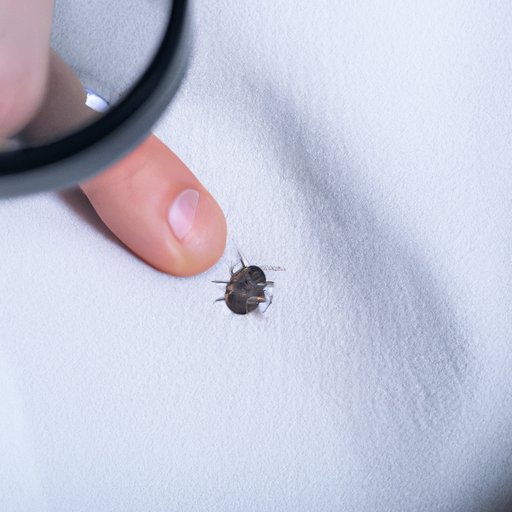
Introduction
Bedbugs are tiny insects that feed on human blood while they sleep. They are flat, reddish-brown in color, and about the size of an apple seed. Many people mistake bedbugs for other insects, which can lead to misidentification and an infestation. The purpose of this article is to provide you with tips on how to check for bedbugs, both through visual inspections and do-it-yourself detection methods. We will also discuss the importance of early detection and prevention techniques to keep your home bedbug-free.
Tips for a Visual Inspection
One of the easiest ways to check for bedbugs is through a visual inspection. Bedbugs are tiny, but they can be seen with the naked eye. Bedbugs are typically reddish-brown in color, and they have an oval shape. They are about the size of an apple seed or a grain of rice. Bedbugs can be found in a variety of places, including in bedding, seams of mattresses, and around baseboards and electrical outlets.
To visually inspect for bedbugs:
- Remove all bedding from the bed and check for stains and fecal matter. Bedbugs leave behind dark stains, fecal matter, and shed skins, which can be found on mattresses, sheets, and walls.
- Use a flashlight to look for bedbugs in the seams of the mattress, around the headboard and footboard, and in the crevices of the bed frame.
- Check for bedbugs around baseboards, electrical outlets, and any cracks or crevices in the wall.
Other tips for successful visual inspections include using a magnifying glass to get a closer look and using a credit card or other flat object to scrape along the seams of the mattress to dislodge any hiding bedbugs.
DIY Bedbug Detection
In addition to visual inspections, there are several do-it-yourself methods for detecting bedbugs.
One of the most popular methods is the use of bedbug traps. These traps use a sticky adhesive to trap bedbugs as they climb in and out of the bed. There are many commercial bedbug traps available on the market, but you can also make your own using household items like double-sided tape or petroleum jelly.
Another method for detecting bedbugs is to make a bedbug detector using household items. To make a detector, fill a shallow dish with water and some dish soap. Place the dish under a nightlight or other light source and wait for the bedbugs to be attracted to the light and fall into the soapy water.
Finally, some people choose to use bedbug detection dogs to locate bedbugs in their home. These dogs are trained to sniff out bedbugs and can be used to identify infestations early on. If you decide to use a bedbug detection dog, make sure to do your research and find a reputable company that uses trained dogs.
Identifying Bedbug Bites
One of the ways to identify bedbugs is by the bites that they leave behind. Bedbug bites are usually small, raised bumps that itch. They often appear in a straight line or clustered together, and they can take up to two weeks to heal.
Bedbug bites can resemble other insect bites, so it is important to look for other signs of a bedbug infestation, such as fecal matter and blood stains on bedding. Bedbugs are also more likely to bite while you sleep, so if you wake up with unexplained bites or itchy spots, it is a good idea to check for bedbugs.
The Importance of Early Detection
Identifying bedbugs early is crucial to preventing an infestation. Bedbugs reproduce quickly and can spread rapidly, making infestations difficult and expensive to eradicate.
Early detection can also lead to a quicker resolution of the problem. The longer an infestation goes undetected, the more difficult it becomes to get rid of. Early detection can save you time, money, and stress in the long run.
Prevention Techniques
Preventing a bedbug infestation is much easier than getting rid of one. There are several simple steps that you can take to prevent bedbugs from entering your home.
First, it is important to maintain cleanliness in your home and to regularly vacuum and wash bedding and linens. It is also a good idea to inspect used furniture and other items before bringing them into your home.
Finally, be vigilant for signs of bedbugs when you travel and when you stay in hotels or other temporary lodging. Bedbugs can easily hitch a ride on your luggage or clothing, so it is important to inspect these items before bringing them into your home.
Conclusion
Checking for bedbugs is an important part of keeping your home free of these pesky insects. By using visual inspections, do-it-yourself detection methods, and early detection techniques, you can identify and prevent bedbug infestations before they become a problem. Remember to stay vigilant and take preventative measures to keep your home bedbug-free.





